February 28th to March 1st, 2013: JERICO TNA “Reference Temperature Calibration (RTC) experiment”
The fourth JERICO TNA experiment took place between the 28th of February and the 1st of March 2013 at the OGS-Oceanographic Calibration Centre (OGS-CTO), the facility for oceanographic testing and calibration of the Department of Oceanography of the OGS (Istituto Nazionale di Oceanografia e di Geofisica Sperimentale), located in Trieste, Italy. The experiment proposal was submitted by HCMR at the First TNA call of JERICO.
The purpose of the experiment was to acquire expertise, receive guidance, and gain “handson” experience in applying the procedures and Best Practice conventions for the calibration of oceanographic temperature sensors using primary reference standards. The long-term goal is for HCMR to be able to perform such calibrations on its own premises. This is essential in order to ensure the quality of the data collected by the POSEIDON network (http://poseidon.hcmr.gr) and field surveys performed by HCMR.
 During the last decade HCMR set up the integrated project POSEIDON, a real-time monitoring and forecasting system for the marine environmental conditions in the Aegean Sea. The monitoring network consists of 11 Seawatch oceanographic buoys, equipped with several sensors deployed at multiple depths, and 9 Smart-wave buoys with the capability of online data transmission to the operational centre of HCMR every 3h through the Inmarsat- C satellite or a GSM mobile telephone communication system. The enhanced forecasting component of the system consists of an atmospheric model, an offshore wave model, a general circulation ocean model, a surface pollutant dispersion model and a shallow water wave model.
During the last decade HCMR set up the integrated project POSEIDON, a real-time monitoring and forecasting system for the marine environmental conditions in the Aegean Sea. The monitoring network consists of 11 Seawatch oceanographic buoys, equipped with several sensors deployed at multiple depths, and 9 Smart-wave buoys with the capability of online data transmission to the operational centre of HCMR every 3h through the Inmarsat- C satellite or a GSM mobile telephone communication system. The enhanced forecasting component of the system consists of an atmospheric model, an offshore wave model, a general circulation ocean model, a surface pollutant dispersion model and a shallow water wave model.
HCMR has established an in-house calibration laboratory for the evaluation and calibration of its oceanographic sensors and instruments. For the calibration of the temperature sensors, two standard platinum thermometer(s) manufactured by Seabird Electronics, Inc. and a large temperature-controlled bath are employed. However, for proper calibration, the reference standard platinum thermometer(s) should be maintained within specifications by linearization, slope and offset adjustments using primary temperature standards (ITS-90 fixed points). The calibration of oceanographic temperature sensors using primary temperature standards requires expertise, and is a delicate and labour-intensive process, often associated with heavy costs for the operators. The HCMR calibration lab does not currently employ this calibration procedure.
 The OGS-Oceanographic Calibration Centre (OGS-CTO) is the facility for oceanographic testing and calibration of the Department of Oceanography of the OGS (Istituto Nazionale di Oceanografia e di Geofisica Sperimentale), located in Trieste, Italy. It provides the scientific and technical infrastructure necessary for high-quality observations of the marine environment using procedures that repeatedly meet recognized international standards of excellence. A critical element of the services offered is the ability to calibrate and maintain sea-going instrumentation efficiently. The facility is run applying relevant international guidelines and protocols as much as practically possible in order to assure conformity or, at least, compatibility, with the regulatory standards governing this kind of activity worldwide.
The OGS-Oceanographic Calibration Centre (OGS-CTO) is the facility for oceanographic testing and calibration of the Department of Oceanography of the OGS (Istituto Nazionale di Oceanografia e di Geofisica Sperimentale), located in Trieste, Italy. It provides the scientific and technical infrastructure necessary for high-quality observations of the marine environment using procedures that repeatedly meet recognized international standards of excellence. A critical element of the services offered is the ability to calibrate and maintain sea-going instrumentation efficiently. The facility is run applying relevant international guidelines and protocols as much as practically possible in order to assure conformity or, at least, compatibility, with the regulatory standards governing this kind of activity worldwide.
At present, the OGS-CTO provides high-calibre temperature and conductivity calibrations, able to meet the demanding oceanographic measurement specifications for these parameters. It is also capable of performing functional tests, evaluations and validations of instrumentation used for measuring other commonly monitored parameters like turbidity, pH, etc.
The sensors under calibration were two SBE35 Deep Ocean Standards Thermometers (serial numbers 58 and 59) manufactured by Seabird Electronics, Inc. that were purchased by HCMR in 2007. One of them, the one bearing serial number (s/n) 59, had never been used in the field while the other has been employed in HCMR’s evaluation/calibration experiments.

For the linearization procedure, the two sensors were placed in a Hart 7052 Seawater Calibration Bath together with a Metal-sheath SPRT Rosemount model 162 CE for taking reference temperature readings . Seven calibration set-points (28 °C to 2 °C) were chosen, and at each set-point, the bath temperature was logged for 10 minutes. The averaged data of the sensors at the different set-points and the corresponding temperature residuals with respect to the relevant reference temperatures are presented in Figure 5.

The data showed that neither of the two sensors required any changes in their linearization coefficients at the present time.
Subsequently, the slope and offset terms of the two sensors were evaluated one at a time at the Triple Point of Water (TPW) and the Melting Point of Gallium (MPGa) using appropriate, certified ITS-90 fixed point cells.

The results indicated that the slope and the offset of one of the the units, specifically, s/n 58 had slightly changed since its last calibration (Table 1), and the experimental data was used to recompute a new slope and offset.

The performances of this unit with its “as received” and new slope and offset settings have been compared using the data from the linearization testing in Figure 7.

Both of the calibrated SBE 35 units will be used as reference sensors for temperature in the calibration laboratory of the HCMR at its facilities in Thalassokosmos in Crete (Greece).

by Manolis Ntoumas (1), Rajesh Nair(2) , Nevio Medeot(2) , Fotis Pantazoglou(1) ,George Petihakis (1)
- Hellenic Center for Marine Research, ,HCMR,Heraklion, Crete, Greece.
- Istituto Nazionale di Oceanografia e di Geofisica Sperimentale,OGS,Trieste,Italy
 Romagnan2015 (1.6 MiB)
Romagnan2015 (1.6 MiB)

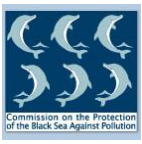 n and eutrophication
n and eutrophication 
 The Regional Conference of the International Geographer’s Union (IGU) will take place in Moscow next summer for the third time since the International Geographical Congress of 1976, when over 2,000 participants from around the world gathered in the Soviet capital for lectures, discussions, workshops and excursions. The pace of global change has since accelerated in directions that once seemed unimaginable.
The Regional Conference of the International Geographer’s Union (IGU) will take place in Moscow next summer for the third time since the International Geographical Congress of 1976, when over 2,000 participants from around the world gathered in the Soviet capital for lectures, discussions, workshops and excursions. The pace of global change has since accelerated in directions that once seemed unimaginable.

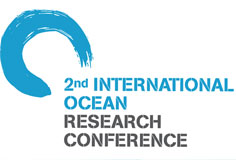



 “Europe’s maritime interests are fundamentally linked to the well-being, prosperity and security of its citizens and communities. Some 90% of the EU’s external trade and 40% of its internal trade is transported by sea. The EU is the third largest importer and the fifth global producer of fisheries and aquaculture. More than 400 million passengers pass through EU ports each year. It depends on open, safe seas and oceans for free trade, transport, tourism, ecological diversity, and for economic development. Failing to protect against a wide array of maritime threats and risks may result in the seas and oceans becoming arenas for international conflicts, terrorism or organised crime.”
“Europe’s maritime interests are fundamentally linked to the well-being, prosperity and security of its citizens and communities. Some 90% of the EU’s external trade and 40% of its internal trade is transported by sea. The EU is the third largest importer and the fifth global producer of fisheries and aquaculture. More than 400 million passengers pass through EU ports each year. It depends on open, safe seas and oceans for free trade, transport, tourism, ecological diversity, and for economic development. Failing to protect against a wide array of maritime threats and risks may result in the seas and oceans becoming arenas for international conflicts, terrorism or organised crime.”


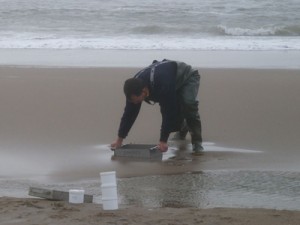 Field visit and demo Sand Engine coastal observatory: HF Radar, Argus camera, jetski with sonar.Field visit and demo Sand Engine coastal observatory: HF Radar, Argus camera, jetski with sonar.
Field visit and demo Sand Engine coastal observatory: HF Radar, Argus camera, jetski with sonar.Field visit and demo Sand Engine coastal observatory: HF Radar, Argus camera, jetski with sonar.

 Those marine worms play a key ecological role as an important source of food for other animals. Work by Stephanie Wright from the University of Exeter found that if ocean sediments are heavily contaminated with microplastics, marine lugworms eat less and their energy levels suffer.
Those marine worms play a key ecological role as an important source of food for other animals. Work by Stephanie Wright from the University of Exeter found that if ocean sediments are heavily contaminated with microplastics, marine lugworms eat less and their energy levels suffer. 
 Countries have committed to the objectives set in the Action Plan, and the progress made – or lack thereof – is assessed every few years at Ministerial Meetings, the latest of which was held in Copenhagen on 3 October 2013 (Ministerial Declaration). To facilitate the evaluation of the progress on the Action Plan implementation, HELCOM produced and released a range of new assessments and reports, “Eutrophication status of the Baltic Sea 2007-2011.A concise thematic assessment” being one of them.
Countries have committed to the objectives set in the Action Plan, and the progress made – or lack thereof – is assessed every few years at Ministerial Meetings, the latest of which was held in Copenhagen on 3 October 2013 (Ministerial Declaration). To facilitate the evaluation of the progress on the Action Plan implementation, HELCOM produced and released a range of new assessments and reports, “Eutrophication status of the Baltic Sea 2007-2011.A concise thematic assessment” being one of them.

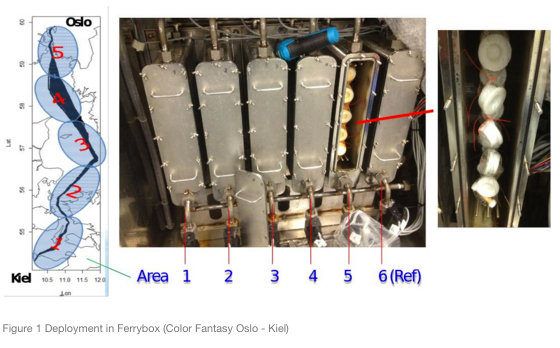







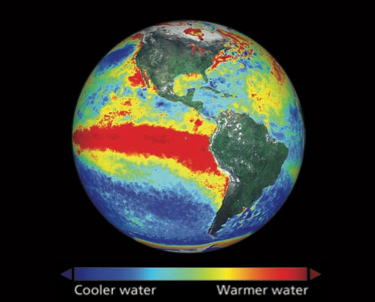





 The Congress will be split according to the 6 Committees of the Commission that will discuss areas related to:
The Congress will be split according to the 6 Committees of the Commission that will discuss areas related to: During the last decade HCMR set up the integrated project POSEIDON, a real-time monitoring and forecasting system for the marine environmental conditions in the Aegean Sea. The monitoring network consists of 11 Seawatch oceanographic buoys, equipped with several sensors deployed at multiple depths, and 9 Smart-wave buoys with the capability of online data transmission to the operational centre of HCMR every 3h through the Inmarsat- C satellite or a GSM mobile telephone communication system. The enhanced forecasting component of the system consists of an atmospheric model, an offshore wave model, a general circulation ocean model, a surface pollutant dispersion model and a shallow water wave model.
During the last decade HCMR set up the integrated project POSEIDON, a real-time monitoring and forecasting system for the marine environmental conditions in the Aegean Sea. The monitoring network consists of 11 Seawatch oceanographic buoys, equipped with several sensors deployed at multiple depths, and 9 Smart-wave buoys with the capability of online data transmission to the operational centre of HCMR every 3h through the Inmarsat- C satellite or a GSM mobile telephone communication system. The enhanced forecasting component of the system consists of an atmospheric model, an offshore wave model, a general circulation ocean model, a surface pollutant dispersion model and a shallow water wave model. The OGS-Oceanographic Calibration Centre (OGS-CTO) is the facility for oceanographic testing and calibration of the Department of Oceanography of the OGS (Istituto Nazionale di Oceanografia e di Geofisica Sperimentale), located in Trieste, Italy. It provides the scientific and technical infrastructure necessary for high-quality observations of the marine environment using procedures that repeatedly meet recognized international standards of excellence. A critical element of the services offered is the ability to calibrate and maintain sea-going instrumentation efficiently. The facility is run applying relevant international guidelines and protocols as much as practically possible in order to assure conformity or, at least, compatibility, with the regulatory standards governing this kind of activity worldwide.
The OGS-Oceanographic Calibration Centre (OGS-CTO) is the facility for oceanographic testing and calibration of the Department of Oceanography of the OGS (Istituto Nazionale di Oceanografia e di Geofisica Sperimentale), located in Trieste, Italy. It provides the scientific and technical infrastructure necessary for high-quality observations of the marine environment using procedures that repeatedly meet recognized international standards of excellence. A critical element of the services offered is the ability to calibrate and maintain sea-going instrumentation efficiently. The facility is run applying relevant international guidelines and protocols as much as practically possible in order to assure conformity or, at least, compatibility, with the regulatory standards governing this kind of activity worldwide.












 The 2m-long wave glider is
The 2m-long wave glider is 
 The NOC are also monitoring on and above the sea surface using marine radar, which has been tracking the movement of birds, and marine mammals in the surrounding areas.
The NOC are also monitoring on and above the sea surface using marine radar, which has been tracking the movement of birds, and marine mammals in the surrounding areas. 
 MyOcean, the Ocean Monitoring and Forecasting system of the GMES Marine Service, has just launched a new edition of its newsletter with informative articles and updates on marine environmental monitoring.
MyOcean, the Ocean Monitoring and Forecasting system of the GMES Marine Service, has just launched a new edition of its newsletter with informative articles and updates on marine environmental monitoring.  ‘The Future of Operational Oceanography 2013’ symposium will take place in Hamburg, Germany at the Congress Centre (CCH) from 8-10 October. The meeting will seek to broaden and galvanize the dialogue on new observational and modelling techniques and the subsequent benefits for a range of marine industries. There will be a wide cross-section of topics in which speakers are invited to submit talks and posters.
‘The Future of Operational Oceanography 2013’ symposium will take place in Hamburg, Germany at the Congress Centre (CCH) from 8-10 October. The meeting will seek to broaden and galvanize the dialogue on new observational and modelling techniques and the subsequent benefits for a range of marine industries. There will be a wide cross-section of topics in which speakers are invited to submit talks and posters.
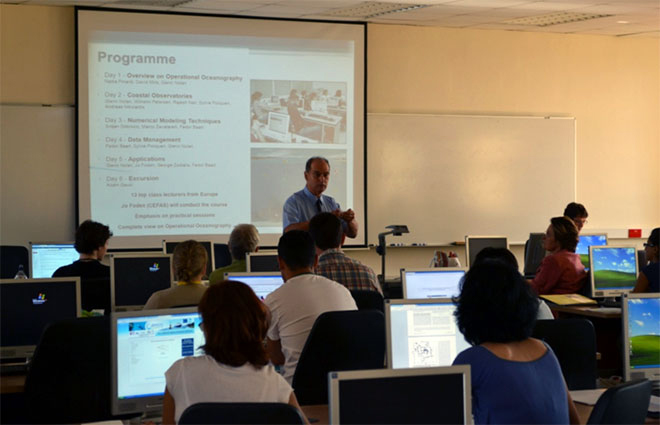








 The second JERICO TNA experiment (www.jerico-fp7.eu) started on Tuesday November 20th, 2012, with the implementation of automatic Dissolved Oxygen (DO) measurements in the Corsica Channel, Ligurian Sea, Western Mediterranean. The experiment is planned to last for twelve months under the aegis of JERICO TNA and then continue for at least other six months as a collaboration of the Institute of Marine Sciences of the National Research Council of Italy (ISMAR CNR), the Observatoire Oceanographique de Villefranche/Mer of the French National Center for Scientific Research (CNRS/OBS-VLFR) and the Mediterranean Institute of Oceanography (MIO).
The second JERICO TNA experiment (www.jerico-fp7.eu) started on Tuesday November 20th, 2012, with the implementation of automatic Dissolved Oxygen (DO) measurements in the Corsica Channel, Ligurian Sea, Western Mediterranean. The experiment is planned to last for twelve months under the aegis of JERICO TNA and then continue for at least other six months as a collaboration of the Institute of Marine Sciences of the National Research Council of Italy (ISMAR CNR), the Observatoire Oceanographique de Villefranche/Mer of the French National Center for Scientific Research (CNRS/OBS-VLFR) and the Mediterranean Institute of Oceanography (MIO).  From previous time series data, a time lag has been observed in terms of T-S change in the LIW level. To solve this issue, regular and long term oxygen measurements might give a good opportunity to understand and to estimate accurately this time lag. This also gives the possibility to quantify the variability versus anomalies of the LIW property due to the climate change already observed in the Mediterranean Sea. The DYFAMED site (DYF, 2350 m depth), in the western part, and the CORSICA Channel (CC, 445 m depth), in the eastern part, are permanently monitored since 1988 and 1985 respectively to observe the water masses evolution and more specifically the shift of the LIW properties due to the climate change.
From previous time series data, a time lag has been observed in terms of T-S change in the LIW level. To solve this issue, regular and long term oxygen measurements might give a good opportunity to understand and to estimate accurately this time lag. This also gives the possibility to quantify the variability versus anomalies of the LIW property due to the climate change already observed in the Mediterranean Sea. The DYFAMED site (DYF, 2350 m depth), in the western part, and the CORSICA Channel (CC, 445 m depth), in the eastern part, are permanently monitored since 1988 and 1985 respectively to observe the water masses evolution and more specifically the shift of the LIW properties due to the climate change.  In summer 2012, the DYFAMED mooring located in the Ligurian Sea between Nice and Calvi has been equipped with two DO sensors (optode 4330F) at 400 m and 2000 m depth (MOOSE-GE cruise). The objective of the TNA activity was to complete the oxygen observation in the Ligurian Sea by implementing a DO sensor on the CC mooring at the core of the LIW water mass (400 m depth). This was done during a maintenance cruise (EUROFLEETS12), performed in November 2012 with the research vessel URANIA of CNR, installing an optical dissolved oxygen sensor (OPTODE 3975 Aanderaa) on the underwater station at 400 m depth.
In summer 2012, the DYFAMED mooring located in the Ligurian Sea between Nice and Calvi has been equipped with two DO sensors (optode 4330F) at 400 m and 2000 m depth (MOOSE-GE cruise). The objective of the TNA activity was to complete the oxygen observation in the Ligurian Sea by implementing a DO sensor on the CC mooring at the core of the LIW water mass (400 m depth). This was done during a maintenance cruise (EUROFLEETS12), performed in November 2012 with the research vessel URANIA of CNR, installing an optical dissolved oxygen sensor (OPTODE 3975 Aanderaa) on the underwater station at 400 m depth. 


 The International Conference on Marine Data and Information Systems of 2013 (IMDIS 2013) will be held in Lucca, Italy on the 23rd till the 25th of September 2013. It aims at providing a general idea of the progresses that have been made in the last years when it comes to the efficient infrastructures for the management of large and various data sets. The sessions will focus on infrastructures, technologies and services for different users: environmental authorities, research, schools, and universities amongst others. The sessions’ topics will be as following:
The International Conference on Marine Data and Information Systems of 2013 (IMDIS 2013) will be held in Lucca, Italy on the 23rd till the 25th of September 2013. It aims at providing a general idea of the progresses that have been made in the last years when it comes to the efficient infrastructures for the management of large and various data sets. The sessions will focus on infrastructures, technologies and services for different users: environmental authorities, research, schools, and universities amongst others. The sessions’ topics will be as following: The first experiment under JERICO (http://www.jerico-fp7.eu/) TNA started on Tuesday October 23rd, 2012, with a deep glider mission from Minorca to Sardinia in the Western Mediterranean Sea. The mission is planned to end on December 10th, 2012.
The first experiment under JERICO (http://www.jerico-fp7.eu/) TNA started on Tuesday October 23rd, 2012, with a deep glider mission from Minorca to Sardinia in the Western Mediterranean Sea. The mission is planned to end on December 10th, 2012.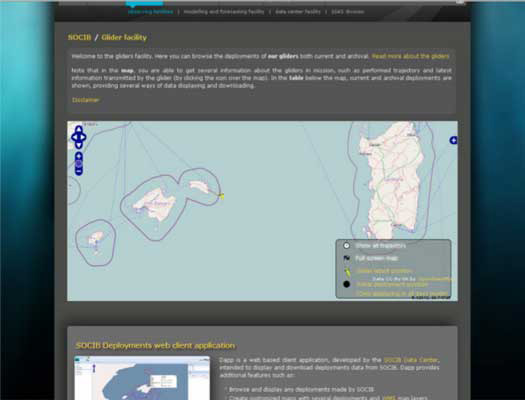
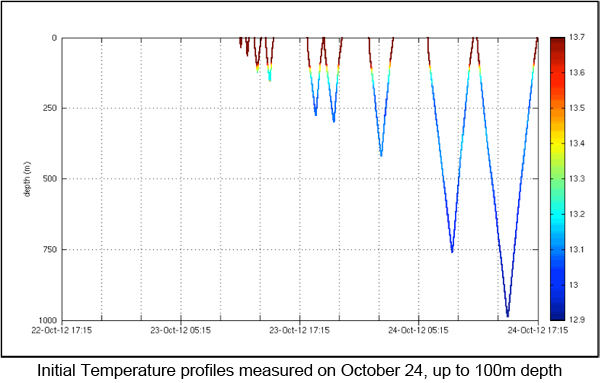

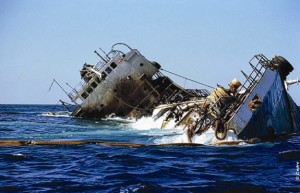 Although the Mediterranean Sea makes up less than 1% of the global marine surface, it sees 20% of the global tank ship maritime traffic. This traffic inevitably means numerous cases of oil pollution at sea, sometimes severe, not to mention pipeline or oil terminal accidents (EEA, 2006). The well-documented events of Prestige in 2002 and BP Deepwater Horizon in 2010 have widely and conclusively demonstrated that an efficient forecasting system is necessary in order to manage similar emergency situations.
Although the Mediterranean Sea makes up less than 1% of the global marine surface, it sees 20% of the global tank ship maritime traffic. This traffic inevitably means numerous cases of oil pollution at sea, sometimes severe, not to mention pipeline or oil terminal accidents (EEA, 2006). The well-documented events of Prestige in 2002 and BP Deepwater Horizon in 2010 have widely and conclusively demonstrated that an efficient forecasting system is necessary in order to manage similar emergency situations.






 A large conference for stakeholders is organized every year, and in 2012 this honour is given to Sweden – where the event will be held in the former shipyard area of Gothenburg. It will be split over three days with public events happening on the actual day, and then conferences and workshops on the 21st and 22nd. Interventions by politicians, industrialists and researchers will give a holistic panorama of the issues facing our seas today, and provide also space for people to air their views.
A large conference for stakeholders is organized every year, and in 2012 this honour is given to Sweden – where the event will be held in the former shipyard area of Gothenburg. It will be split over three days with public events happening on the actual day, and then conferences and workshops on the 21st and 22nd. Interventions by politicians, industrialists and researchers will give a holistic panorama of the issues facing our seas today, and provide also space for people to air their views.






 The EU believes that research and innovation are key instruments in promoting sustainable economic growth and job creation. The Southern Mediterranean region called for innovative and ambitious responses from the European Union. The European Commission has established all Mediterranean countries as priority. The EC has also developed a new strategy which is found in two joint Communications of the European Commission and the High Representative of the Union for Foreign Affairs and Security Policy. Hence the EU has developed the strategy named CKIS (Common Knowledge and Innovation Space) which is linked to Smart Growth and the EU’s innovation agenda.
The EU believes that research and innovation are key instruments in promoting sustainable economic growth and job creation. The Southern Mediterranean region called for innovative and ambitious responses from the European Union. The European Commission has established all Mediterranean countries as priority. The EC has also developed a new strategy which is found in two joint Communications of the European Commission and the High Representative of the Union for Foreign Affairs and Security Policy. Hence the EU has developed the strategy named CKIS (Common Knowledge and Innovation Space) which is linked to Smart Growth and the EU’s innovation agenda.